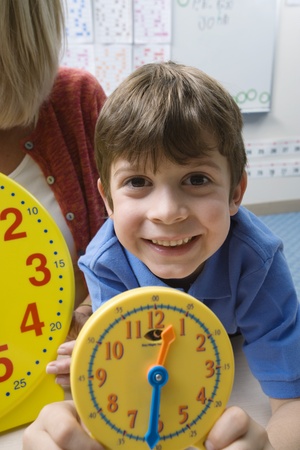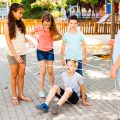The Importance of Creative Play in Paediatric Rehabilitation
In the United Kingdom, creative play is increasingly recognised as an essential component in the rehabilitation process for children recovering from illness or injury. Far beyond a simple pastime, creative play harnesses the power of imagination to foster holistic healing—supporting not just physical recovery, but emotional and social well-being too. For many young patients, engaging in play provides a safe space to express feelings, cope with changes, and regain confidence after challenging experiences. Through activities such as art, music, storytelling, and role-play, children can process complex emotions, improve their communication skills, and rebuild relationships with peers and family members. Within NHS settings and specialist paediatric centres across the UK, therapists and clinicians are embracing play-based interventions tailored to each child’s unique needs. By incorporating creative play into rehabilitation programmes, healthcare professionals empower children to take an active role in their own recovery journey—helping them to build resilience, restore independence, and ultimately achieve better long-term outcomes.
2. Understanding the British Context: Cultural and Systemic Considerations
When exploring the integration of creative play within children’s rehabilitation in the UK, it is essential to appreciate the unique interplay between cultural values, healthcare frameworks, and educational systems. The British approach is shaped by a strong commitment to inclusivity, child-centred care, and evidence-based practices—key factors that influence how creative play is implemented in both clinical and community settings.
The NHS and Creative Play
The National Health Service (NHS) stands at the heart of healthcare provision in the UK, offering universal access regardless of background or income. This national structure facilitates collaboration between health professionals such as occupational therapists, physiotherapists, and play specialists who are trained to tailor rehabilitation through playful interventions. The NHS also emphasises holistic wellbeing; thus, creative play is not merely entertainment but an intentional tool for enhancing recovery outcomes, emotional resilience, and social skills.
Educational Frameworks Supporting Rehabilitation
British schools, including mainstream and special educational settings, are deeply involved in children’s rehabilitation journeys. Legislation such as the SEND Code of Practice (Special Educational Needs and Disabilities) ensures every child has access to personalised support plans that often incorporate elements of creative play. Teachers, teaching assistants, and school therapists work together to align therapy goals with curricular activities, fostering a seamless transition between therapy environments and everyday classroom life.
| Systemic Aspect | How It Shapes Creative Play in Rehabilitation |
|---|---|
| NHS Universal Healthcare | Ensures equitable access to play-based therapies for all children; promotes multidisciplinary team approaches |
| SEND Code of Practice | Mandates individualised education plans that often include creative play strategies tailored to each child’s needs |
| Cultural Emphasis on Inclusion | Encourages diverse, accessible play methods suitable for children from various backgrounds and abilities |
| Professional Standards & Training | Healthcare and education professionals receive specialised training in using creative play therapeutically |
Cultural Attitudes Towards Play
In the UK, there is a longstanding recognition of play as fundamental to childhood development. Parents, clinicians, and educators alike value imaginative activities not just for leisure but as powerful catalysts for learning and healing. Campaigns led by organisations such as Play England further reinforce the societal belief that every child deserves quality opportunities for creativity—even within the context of medical or rehabilitative care.
Together, these cultural and systemic factors create a supportive environment where creative play thrives as a core component of paediatric rehabilitation. By understanding this uniquely British landscape, practitioners can design interventions that resonate with local families while adhering to best practice standards.

3. Innovative Approaches to Creative Play: Case Studies from the NHS and Beyond
The United Kingdom is at the forefront of integrating creative play into paediatric rehabilitation, with numerous NHS trusts and community organisations pioneering innovative methods to support childrens recovery. These approaches harness the therapeutic potential of art, drama, and music to address both physical and emotional challenges faced by young patients.
Art Therapy in NHS Hospitals
Art therapy has become a cornerstone of child rehabilitation in many UK hospitals. For example, Great Ormond Street Hospital (GOSH) in London runs dedicated art therapy sessions where children are encouraged to express their feelings through painting, drawing, or sculpture. These sessions not only provide an emotional outlet but also help improve fine motor skills for those recovering from injuries or surgery. The success stories at GOSH highlight how creating artwork can foster self-esteem and resilience during long-term hospital stays.
Drama Therapy for Emotional Wellbeing
Drama therapy is another powerful tool used in NHS settings such as Birmingham Children’s Hospital. Here, therapists use role-play, storytelling, and improvisation to help children process trauma or anxiety related to illness. For instance, one programme enabled a young cancer patient to act out her experiences, helping her regain a sense of control and communicate complex emotions to her family and care team. Such interventions have shown measurable improvements in mood and social interaction among participants.
Music Therapy: Healing Through Sound
Music therapy is widely recognised across the UK as an effective means of supporting recovery. Alder Hey Children’s Hospital in Liverpool offers music workshops where children can sing, play instruments, or simply listen. This approach has been particularly beneficial for children with neurological conditions or developmental delays. One notable case involved a boy with cerebral palsy who made significant progress in movement coordination after engaging in rhythmic drumming sessions designed by specialist therapists.
Community-Based Creative Programmes
Beyond hospital walls, community initiatives play a crucial role in sustaining recovery through creative play. Organisations like The Art Room (now part of Place2Be) deliver art-based interventions in schools across Oxfordshire and London, helping children transition back into daily life post-treatment. Similarly, local councils often fund inclusive drama groups that bring together children with varied health backgrounds, fostering peer support and inclusivity.
A Holistic Approach to Rehabilitation
These diverse examples from NHS hospitals and community programmes demonstrate that creative play is more than just entertainment—it is a vital therapeutic tool. By tailoring activities to each child’s interests and abilities, practitioners across the UK are ensuring that imaginative engagement remains at the heart of paediatric rehabilitation, promoting holistic recovery that encompasses body, mind, and spirit.
Engaging Families and Communities in the Recovery Journey
In the UK, creative play is not only a valuable therapeutic tool within clinical settings but also thrives when embraced by families, carers, and local communities. The collaborative involvement of these groups plays a pivotal role in supporting children’s recovery, especially after illness, injury, or emotional trauma. When parents, carers, and community members actively participate in imaginative play, they create a supportive environment that fosters confidence, resilience, and holistic well-being for children.
The Collaborative Approach: Why It Matters
Successful rehabilitation through creative play relies on more than just the efforts of healthcare professionals. By engaging families and communities, children benefit from consistent encouragement and opportunities to express themselves beyond hospital or therapy sessions. This inclusive approach helps bridge the gap between formal rehabilitation and everyday life, making recovery a continuous journey rather than a segmented process.
Key Roles of Supportive Adults
| Role | Examples of Involvement | Benefits for Children |
|---|---|---|
| Parents & Carers | Participating in storytelling games at home; facilitating access to art materials; joining creative workshops | Enhanced emotional security; stronger parent-child bonds; increased motivation to engage in play |
| Teachers & School Staff | Integrating imaginative play into classroom activities; collaborating with therapists for tailored support plans | Smoother reintegration into school life; peer support; academic engagement through creativity |
| Community Groups | Organising local play events; offering safe spaces for group activities; supporting inclusive programmes | Social connection; sense of belonging; extended support network outside the family unit |
Championing Local Initiatives and Resources
The UK has a rich tradition of community-based initiatives that champion creative play as part of rehabilitation. Libraries, youth clubs, and local charities often run play sessions and arts programmes designed specifically for children recovering from health challenges. These initiatives not only complement formal therapy but also celebrate cultural diversity and inclusivity—key values within British society.
Empowering Families Through Education and Involvement
Empowering families with knowledge about the benefits of creative play—and practical ways to integrate it into daily routines—can significantly enhance recovery outcomes. Workshops led by occupational therapists or child psychologists provide parents and carers with strategies to encourage open-ended play at home. Meanwhile, online resources and support groups offer ongoing guidance and a sense of solidarity among families facing similar journeys.
The collective effort of parents, carers, teachers, and community organisations ensures that every child in the UK has the opportunity to harness their imagination as a powerful tool for healing. By working together, we build resilient futures where creative play is woven into the very fabric of children’s lives.
5. Practical Tips for Healthcare Professionals and Educators
Integrating Creative Play into Rehabilitation Settings
For healthcare professionals and educators in the UK, incorporating creative play into children’s rehabilitation need not be a daunting task. The following evidence-based strategies can help embed imaginative activities within day-to-day practice, ensuring that every child receives the holistic support they deserve.
Create a Play-Friendly Environment
Designate areas within hospitals, clinics, or classrooms specifically for play. Equip these spaces with safe, age-appropriate toys, art supplies, costumes, and musical instruments. Ensure the environment is inclusive and accessible to children of all abilities, reflecting the diversity seen across the UK.
Collaborate with Families and Caregivers
Engage parents and carers by sharing the benefits of creative play in recovery. Encourage them to participate in sessions when appropriate and provide guidance on continuing play-based activities at home. Regular communication builds trust and helps extend therapeutic gains beyond clinical settings.
Tailor Activities to Individual Needs
Recognise that every child’s interests and abilities are unique. Use assessments and direct observation to identify what types of creative play resonate most with each child—be it storytelling, role-play, painting, or movement games. Personalised approaches foster engagement and maximise therapeutic outcomes.
Incorporate Play into Routine Therapies
Blend creative play seamlessly with physiotherapy, occupational therapy, or speech and language sessions. For example, use puppets to encourage verbal expression or turn physical exercises into adventure games. Integrating play keeps therapy enjoyable and motivating for children.
Ongoing Professional Development
Stay informed about the latest research on play-based rehabilitation by attending relevant training sessions or joining professional networks such as the British Association of Play Therapists. Sharing best practices with colleagues fosters a culture of innovation and continuous improvement within your team.
Promoting Equity Across the UK
Finally, advocate for equal access to creative resources regardless of geographic location or socio-economic background. Collaboration between NHS Trusts, local authorities, and community organisations can help bridge gaps in provision, ensuring all children benefit from creative rehabilitation opportunities throughout the UK.
6. Overcoming Barriers: Accessibility, Inclusivity, and Equity
Ensuring that creative play-based rehabilitation is accessible and inclusive for every child in the UK is both a responsibility and a challenge. Unfortunately, many children and families face barriers such as limited resources, cultural differences, language obstacles, and varying levels of physical or cognitive ability. To create truly equitable opportunities for recovery, it is essential to acknowledge these challenges and proactively develop solutions that suit the diverse landscape of British society.
Addressing Resource Limitations
Resource limitations—whether they are financial, spatial, or related to staffing—can restrict the availability of creative play programmes within NHS facilities and community settings. Partnerships between schools, charities, local authorities, and healthcare providers can help pool resources, making specialist equipment and trained facilitators more widely available. For example, mobile creative play units or lending libraries of adaptive toys can ensure even rural or underfunded areas have access to high-quality interventions.
Fostering Inclusivity Through Adaptation
Diversity within the UK population means rehabilitation approaches must be culturally sensitive and adaptable. Offering materials in multiple languages, involving families in designing play activities relevant to their backgrounds, and training staff in cultural competency all contribute to a more welcoming environment. Additionally, adapting creative play for children with different abilities—such as using tactile materials for visually impaired children or incorporating sign language—ensures nobody is left behind.
Promoting Equity for All Families
Equity goes beyond simply providing access; it’s about giving each child what they need to thrive. This might mean home visits for families unable to travel, digital platforms for remote participation, or parent workshops that empower caregivers to support creative play at home. Regular feedback from children and parents can guide continuous improvement, ensuring services remain relevant and effective across diverse communities in England, Scotland, Wales, and Northern Ireland.
By recognising and addressing these barriers head-on—with compassion, creativity, and collaboration—the UK can set a gold standard for inclusive rehabilitation through creative play. Every child deserves the chance to recover with dignity and joy, harnessing the power of imagination on their journey back to health.


